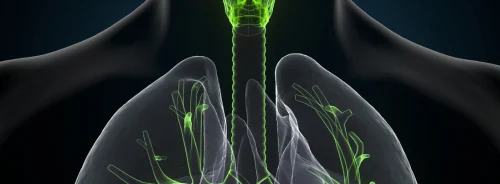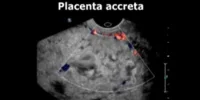When the American Board of Internal Medicine Foundation began the Choosing Wisely® initiative in 2012, eight other specialty medical societies, including the American College of Radiology, joined the move to reduce overuse of tests and procedures. Media interest was high, noted David C. Levin, MD, from Thomas
Jefferson University, speaking at the Radiological Society of North America (RSNA) Annual Meeting in Chicago. Headlines included “Doctor panels recommend fewer tests for patients" (New York Times), and an editorial “Do you need that test?”, lauded the initiative. saying “the groups showed admirable statesmanship by proposing cuts that would affect their incomes, as when radiologists proposed limits on various tests they perform.” “Made us look kind of good!” said Levin. Clearly the public is behind the idea, but perhaps radiologists need to do more to educate referring physicians, said Levin.
There are now 62 societies and 320 tests on the list. 16 imaging tests were on the list in 2012, and now there are 82 imaging tests (10 performed by cardiologists and 72 by radiologists).
Examples include:
Levin concluded that many imaging tests are felt to be overused or often unnecessary. However, if you are looking for those specific imaging tests, the Choosing Wisely lists are unwieldy, and the imaging tests are dispersed amongst the specialty societies’ lists.
Levin and his colleague Vijay Rao plan to update their previous publications to include the 82 imaging tests by body area (chest, neuro etc). He encouraged radiologists to champion the use of the Choosing Wisely list in order to reduce unnecessary imaging. Education is needed for referring physicians, and could be done in a variety of ways. It will be especially important in the era of accountable care.
Levin was asked if United States radiologists will get to the point of being consulting physicians when it comes to ordering imaging. He felt that radiologists have been partly at fault by not trying to be gatekeepers in order not to alienate referring physicians by questioning their judgement.
Levin also urged radiologists to familiarise primary care physicians and specialists with the ACR appropriateness criteira. Do enough physicians outside radiology know about them?
Claire Pillar
Managing Editor, HealthManagement
Jefferson University, speaking at the Radiological Society of North America (RSNA) Annual Meeting in Chicago. Headlines included “Doctor panels recommend fewer tests for patients" (New York Times), and an editorial “Do you need that test?”, lauded the initiative. saying “the groups showed admirable statesmanship by proposing cuts that would affect their incomes, as when radiologists proposed limits on various tests they perform.” “Made us look kind of good!” said Levin. Clearly the public is behind the idea, but perhaps radiologists need to do more to educate referring physicians, said Levin.
There are now 62 societies and 320 tests on the list. 16 imaging tests were on the list in 2012, and now there are 82 imaging tests (10 performed by cardiologists and 72 by radiologists).
Examples include:
- Screening for carotid stenosis in asymptomatic adults
- Thyroid nuclear scan to evaluate nodules in patients with normal function
- MRI of joints to routinely monitor inflammatory arthritis
- Head CT in emergency room patients with head injury who are at low risk
- Chest CT screening in patients at low risk for lung cancer
- Insert IVC filters routinely in patients with acute venous thromboembolism
- CT of the head for sudden hearing loss
- Followup imaging in known DVT in absence of clinical change
- Imaging to screen for ovarian cancer in asymptomatic women with average or low risk
- PET/CT for cancer screening in healthy individuals
- CT coronary calcium score for preoperative evaluation for any surgery
- Coronary CTA for screening asymptomatic patients
Levin concluded that many imaging tests are felt to be overused or often unnecessary. However, if you are looking for those specific imaging tests, the Choosing Wisely lists are unwieldy, and the imaging tests are dispersed amongst the specialty societies’ lists.
Levin and his colleague Vijay Rao plan to update their previous publications to include the 82 imaging tests by body area (chest, neuro etc). He encouraged radiologists to champion the use of the Choosing Wisely list in order to reduce unnecessary imaging. Education is needed for referring physicians, and could be done in a variety of ways. It will be especially important in the era of accountable care.
Levin was asked if United States radiologists will get to the point of being consulting physicians when it comes to ordering imaging. He felt that radiologists have been partly at fault by not trying to be gatekeepers in order not to alienate referring physicians by questioning their judgement.
Levin also urged radiologists to familiarise primary care physicians and specialists with the ACR appropriateness criteira. Do enough physicians outside radiology know about them?
Claire Pillar
Managing Editor, HealthManagement
References:
Rao VM, Levin DC (2012) The overuse of diagnostic imaging and the Choosing Wisely initiative. Ann Intern Med, 157(8): 574-6.
Rao VM, Levin DC (2014) The Choosing Wisely initiative of the American Board of Internal Medicine Foundation: what will its impact be on radiology practice? AJR Am J Roentgenol. 202(2): 358-61.
Rao VM, Levin DC (2014) The Choosing Wisely initiative of the American Board of Internal Medicine Foundation: what will its impact be on radiology practice? AJR Am J Roentgenol. 202(2): 358-61.
Latest Articles
RSNA 2014, appropriate use, #RSNA14, Choosing Wisely
When the American Board of Internal Medicine Foundation began the Choosing Wisely® initiative in 2012, eight other specialty medical societies, including...










